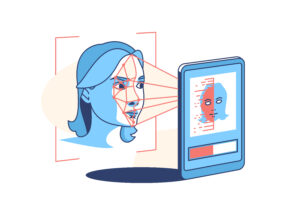Technology has revolutionized the way we interact with the world, and one of its most impressive accomplishments is the ability to understand and interpret written documents. In government and legal systems, this technology is known as OCR (optical character recognition). OCR can quickly scan millions of pages of documents and accurately extract text, making it a must-have tool for any institution that handles large volumes of paperwork. But what makes it so invaluable? In this blog post, we’ll dive into the specifics of how OCR helps governments and legal systems streamline their data exchange processes and make them more efficient.
What is OCR and how does it work?
Originating in the early 1900s, optical character recognition (OCR) is the mechanical or electronic translation of scanned images of handwritten, typewritten, or printed text into machine-encoded text. It is a key technology used in document management systems and content management systems.
How OCR works:
OCR software analyzes a document and compares it to a database of known characters. The software looks for patterns in the document that match the known characters. Once the software identifies all the characters in the document, it translates them into machine-encoded text.
The benefits of using OCR in government and legal systems
There are many benefits to using OCR in government and legal systems. OCR can help reduce the cost of printing, scanning, and storing documents. OCR can also help reduce the amount of time needed to process documents. OCR can help improve the accuracy of document processing, and it can help make document processing more efficient.
The challenges of using OCR in government and legal systems
There are many challenges that come with using OCR in government and legal systems. One of the biggest challenges is accuracy. When OCR is used to convert scanned documents into digital text, there is always the potential for error. This is especially true if the document is old or damaged.
Another challenge is indexing and searchability. Once a document has been converted into digital text using OCR, it needs to be properly indexed so that it can be easily found and searched later on. This can be a time-consuming and difficult process, especially for large collections of documents.
Finally, OCR can be expensive. The hardware and software needed to properly carry out OCR can be costly, and there may also be associated costs for training staff on how to use the technology.
How to implement OCR in government and legal systems
There are many benefits to using OCR in government and legal systems. Perhaps the most obvious is the time saved by not having to manually enter information from documents. This can be a huge time saver when dealing with large quantities of documents.
Another big benefit is increased accuracy. When data is manually entered, there is always the potential for human error. OCR can eliminate this risk by providing an accurate and reliable way to convert scanned documents into machine-readable text.
Finally, OCR can help to preserve important historical documents. By digitizing these documents, they can be stored safely and securely for future generations.
If you’re interested in implementing OCR in your government or legal system, there are a few things you’ll need to do. First, you’ll need to purchase or develop an OCR software solution that meets your specific needs. Once you have your software in place, you’ll need to train your staff on how to use it. Finally, you’ll need to establish procedures for scanning and storing documents electronically.
Conclusion
OCR technology is a great asset for government and legal systems because of its ability to scan, convert, and interpret documents more quickly and accurately than manual methods. This can help streamline the process of handling paperwork in these sectors while also aiding in accuracy, compliance with standards, and cost savings. With the rapid development of OCR technology over recent years, it has become clear that this system will play an ever-increasing role in government agencies and legal systems.






